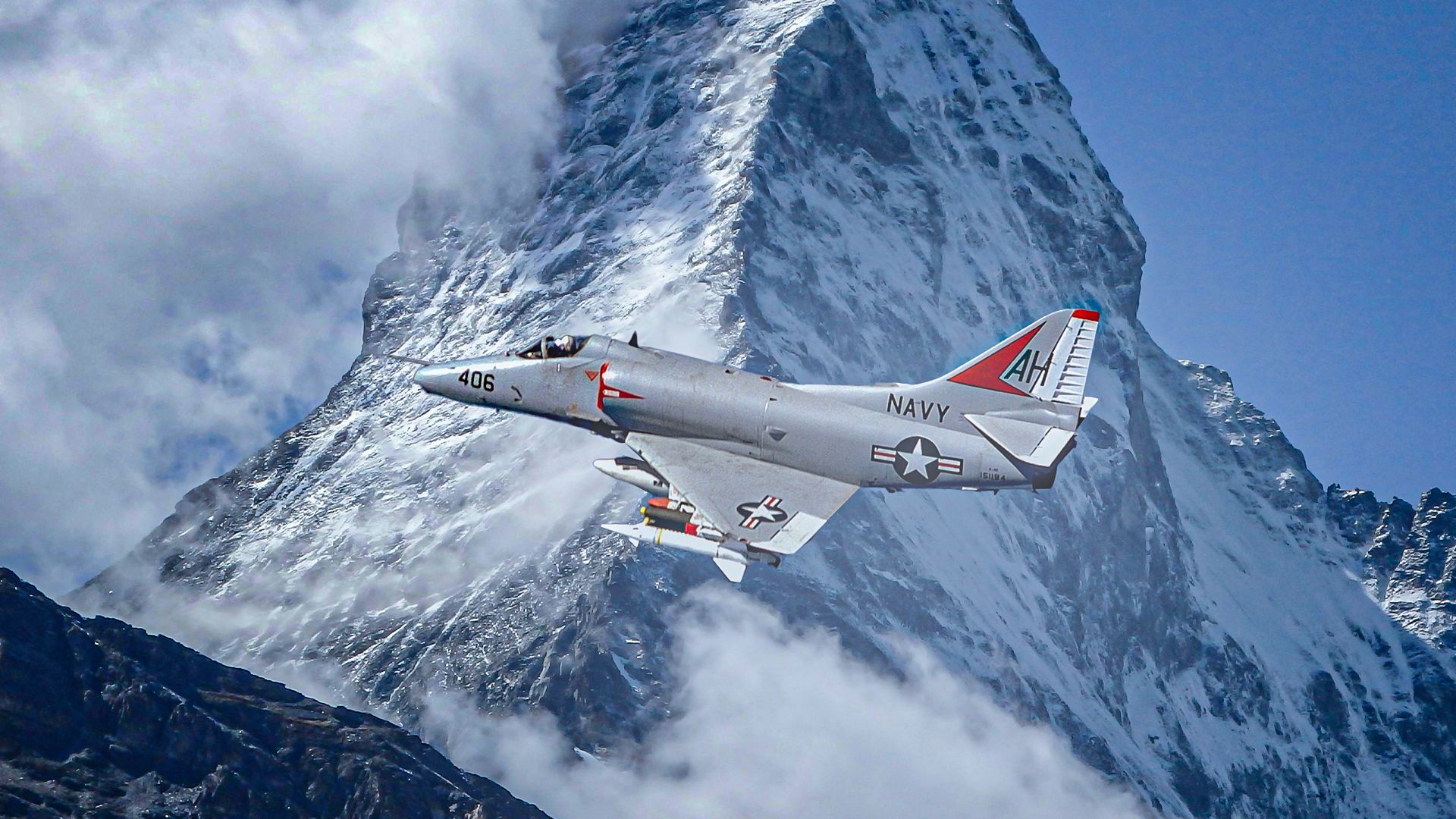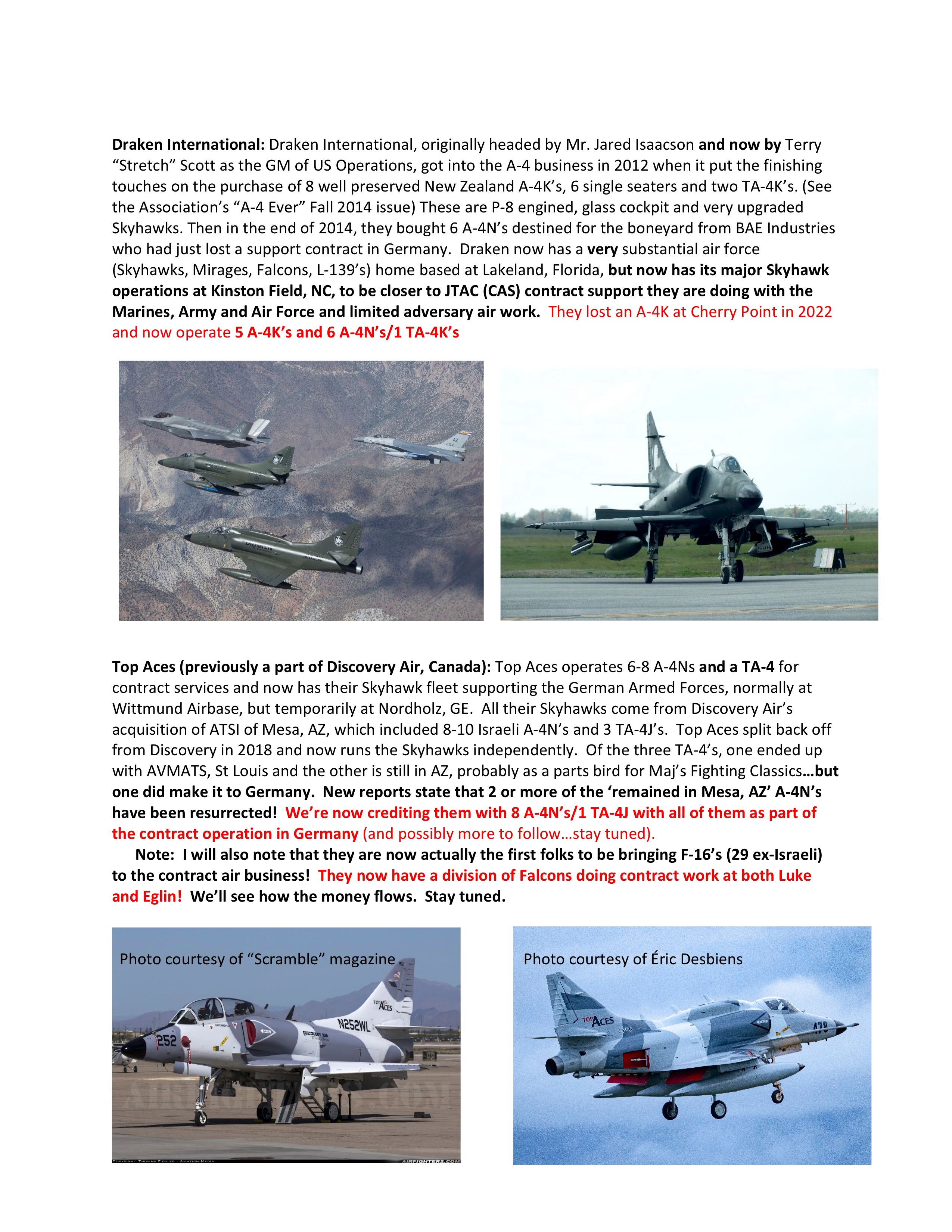Summary
- The A-4 Skyhawk, despite not being as famous as other US aircraft, earned its place as legendary in the Vietnam War and beyond.
- The A-4 was the first to drop ordnance in the Vietnam War and logged the most combat missions among naval attack aircraft.
- The Skyhawk had an extensive combat history beyond the US, with notable involvement in conflicts like the Yom Kippur War and the Falklands War.
Though the Vietnam War ultimately did not prove to be a victorious endeavor for the United States of America, it nonetheless served as a proving ground in which multiple US combat aircraft established their status as legends of aerial warfare.
Though not quite as famous as the US Air Force’s B-52 Stratofortress bomber or the F-4 Phantom II flown by the USAF, US Navy, and US Marine Corps alike, the USN’s A-4 Skyhawk carrier-borne light attack aircraft nonetheless earned its rightful place amongst the legendary aircraft of not only the Vietnam War but multiple other armed conflicts as well. Simple Flying now takes a closer look at the Skyhawk’s storied career.
A-4 initial history and technical specifications (including armament)
The Douglas (later McDonnell Douglas) A-4 Skyhawk made its maiden flight on June 22, 1954 — thus making the venerable warbird a septuagenarian — and entered into official operational service with the USN on October 1, 1956.
Douglas Aircraft Company – which also produced legendary warbirds such as the SBD Dauntless WWII dive bomber and the A-1 Skyraider ground attack plane that served in both the Korean and Vietnam Wars – merged with McDonnell Aircraft in 1967 to form McDonnell Douglas, which in turn merged with Boeing in 1997.
The Skyhawk came with the following specifications:
|
Fuselage Length: |
40 ft 1.5 in (12.230 m) |
|
Wingspan: |
27 ft 6 in (8.38 m) |
|
Height: |
15 ft 2 in (4.62 m) |
|
Empty Weight: |
9,853 lb (4,469 kg) |
|
Max Takeoff Weight: |
24,500 lb (11,113 kg) |
|
Powerplant: |
1 × Pratt & Whitney J52-P-6A turbojet engine, 8,500 lbf (38 kN) thrust |
|
Max Airspeed: |
673 mph (1,083 km/h, 585 kn, Mach 0.877) at sea level |
|
Range: |
1,008 NM (1,160 mi, 1,867 km) |
|
g Limits |
+8 -3 |
|
Rate of Climb |
5,750 ft/min (29.2 m/s) |
|
Armament: |
|
How good was it? Operational history and performance Part I: the Vietnam War
As noted by an article in Duotech Services, the A-4 Skyhawk was a history-maker during the Vietnam War several times over:
- First aircraft to drop ordnance in the Vietnam War – This occurred during the Gulf of Tonkin Incident of August 5, 1964, when A-4s attacked North Vietnamese torpedo boats in retaliation for the patrol boats’ attacks on the USN destroyers USS Maddox (DD-731) and Turner Joy (DD-951). During that retaliatory mission, then-Lt. Junior Grade (later retired Commander) Everett Alvarez was shot down and captured, becoming the second longest-held US prisoner of war (POW) of the war,
- Most Combat Missions in Vietnam – The A-4 logged more Vietnam combat missions than any other naval attack aircraft, even more than the famed A-6 Intruder and A-7 Corsair II (AKA “SLUF” for “Short Little Ugly F*cker”). A grand total of 362 Skyhawks were lost during the Vietnam War due to all causes.
- Only one air-to-air kill – The warbird wasn’t designed for dogfighting enemy fighters. Still, the Skyhawk managed to nab a single air-to-air victory on May 1, 1967 (“May Day,” ironically enough). Employing a Zuni unguided rocket, an A-4C assigned to the USS Bon Homme Richard (CV/CVA-31) shot down a Vietnamese Air Force MiG-17 “Fresco.” Another ironic twist of fate was that a MiG-17 that scored the Communists’ only air-to-air victory against the A-4 during that same war.
- Final A-4 Loss in Vietnam – While flying close air support (CAS) on September 26, 1972, USMC Captain James Walsh was hit by ground fire and compelled to eject from the aircraft. He was the last “devil dog” to be taken prisoner during the Vietnam War.
Besides the aforementioned CDR Alvarez, the most famous Skyhawk driver of the Vietnam War was eventual US Senator (R-AZ) and GOP presidential candidate John Sidney McCain III (August 29, 1936 – August 25, 2018). Then, the Lieutenant Commander (later retired Captain) McCain successfully completed 22 missions in the A-4E. Still, on his fateful 23rd mission on October 26, 1967, his plane was struck by a North Vietnamese surface-to-air missile (SAM) while flying over Hanoi.
He managed to eject but fractured both arms and one leg in the process, and as if that weren’t bad enough, once the North Vietnamese Army (NVA) troops captured him, they crushed his shoulder with a rifle butt and bayoneted him! From there, the future Senator ended up spending 5.5 years as a prisoner POW at the hellhole that Hỏa Lò Prison infamously nicknamed the “Hanoi Hilton.”
“When tales are told in the halls of fame
When warriors meet, you’ll hear these names:
Skyhawk, Crusader, Intruder, Phantom, Thud”
“Battle Hymn of the Red River Rats” by Dick Jonas (AKA “The Fighter Pilot’s Minstrel;” Lt. Col, USAF [Ret.]) [emphasis added]
How good was it? Operational history and performance: non-US combat histories
But it wasn’t just during the Vietnam War that the Skyhawk demonstrated its battlefield prowess, nor was it solely battle-tested in American hands. As I noted in an article originally published in 19FortyFive in mid-2022 and then republished in The National Interest this past January:
“The Israeli Defense Forces (IDF) were the largest export customer of the A-4 Skyhawk, with an initial contract for 48 such warbirds ordered on 02 June 1966. The Israelis quickly grew to love the Skyhawk just as much as their American counterparts did, adoringly renaming it the “Ayit” (Eagle, obviously not to be confused with the F-15 Eagle that later entered the IDF aerial arsenal). The IDF pilots put their Ayits to heavy-duty use during the 1973 Yom Kippur War; of 102 Israeli aircraft lost, 53 were Ayits.”
“However, the Ayit drivers gave as good as they got. As described in an August 2009 issue of Defense Industry Daily, “That war was not without its moments of distinction. In one engagement, an Israeli A-4 Ayit found itself facing 3 MiG-21s. The maneuverable little A-4 turned on them and brought 2 of them down, and was reportedly on the 3rd Fishbed’s tail when an IAF Mirage IIIC zipped through and blasted the MiG out of the sky.”
Argentina was the largest foreign military sales (FMS) customer of the A-4. The Argentine A-4s would see major combat usage during the 1982 Falkland Islands War (or, as Argentines call it, La Guerra de Malvinas) against Great Britain. The Argentine Skyhawk drivers pulled off some impressive feats in an ultimately losing effort, including the sinking of the Royal Navy destroyer HMS Coventry (Pennant number D118). However, the Argentine Skyhawk pilots didn’t fare so well in aerial combat against the RN Fleet Air Arm’s Sea Harriers (which racked up a mind-boggling 23:0 kill ratio during that conflict).
As I wrote for the National Interest:
“As far as Yours Truly can ascertain, the last nation to use the Skyhawk in major combat operations was Kuwait, during the 1990-1991 Persian Gulf War. In response to Saddam Hussein’s initial invasion of their tiny country in August 1990, Kuwaiti Air Force pilots strafed an Iraq armored column of the al-Medinah al-Munawera Division, and shot down three Iraqi helicopters.”
“The Iraqis managed to destroy five A-4s and captured five others, but 29 Kuwaiti Skyhawks escaped, with 24 making their way to Saudi Arabia. From there, under the auspices of the “Free Kuwaiti Air Force,” they flew 1,361 sorties during the liberation of their country. Only one A4KU was shot down during that phase of the conflict, downed by a SAM; the pilot, Lt. Col. Mohammed ‘Mo’ Al Mubarak, safely ejected and was taken prisoner.”
Where are they now?
The USMC retired the Skyhawk in 1998, with the USN following suit in 2003. However, amazingly enough, two of the world’s military forces still use an A-4 variant to this day:
Meanwhile, there are at least three known private entities in the United States that own and operate restored A-4s:
According to the Skyhawk Association, a grand total of 45 A-4s are still airworthy as of February 2024.



